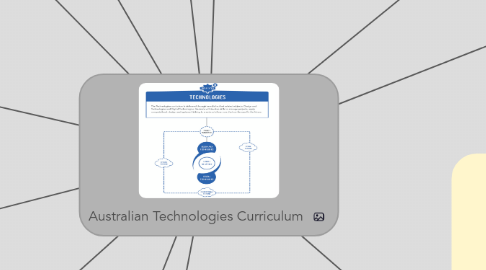
1. Student Diversity
1.1. Student with disability: Disability Discrimination Act 1992 and Disability Standards for Education 2005.
1.2. English as an Additional Language or Dialect
1.3. Gifted and Talented Students
2. Cross-Curriculum Priorites
2.1. Aboriginal and Torres Strait Island histories and cultures
2.2. Asia and Australia's engagement with Asia
2.3. Sustainability
3. Achievement Standards
3.1. Foundation to Year 2
3.2. Year 3 and 4
3.3. Year 5 and 6
3.4. Yar 7 and 8
4. Key ideas
4.1. Creating preferred futures
4.1.1. Students consider solutions and analyse the possible benefits and risks of the solutions.
4.2. Project Management
4.2.1. Use planning, organising, resources and skills to manage projects. They look into a variety of ethical/health/safety/beliefs and values considerations of the project.
4.3. Thinking in Technologies
4.3.1. Design Thinking
4.3.2. System Thinking
4.3.3. Computational Thinking
4.3.4. Creative/ Critical Thinking Skills (General Capabilities)
5. Key Concepts
5.1. Abstration
5.2. Data- Collection and representation
5.3. Data- Interpretation, patterns and contexts
5.4. Specification, Algorithms, Implementation- algorithms how systems work.
5.5. Implementation- programming
6. Achievement Standards
6.1. The quality of learning that students should be at that point in their schooling. Summaried in the scope and sequence and covers both strands of; knowledge and understanding; and, processes and production skills. Covers the foundation to year 10.
7. Content Elaborations
7.1. Content elaborations are provided for each content description in Foundation to Year 10 to illustrate content.
7.2. Content elaborations are provided to extend understanding on the content descriptions.
8. Year/ Band Levels
8.1. Foundation- Year 2
8.2. Year 3-Year 4
8.3. Year 5-Year 6
8.4. Year 7-Year 8
8.5. Year 9-Year 10
9. Curriculum Aims
9.1. Investigate design, plan, manage, create and evaluate solutions
9.2. Understand how technologies have developed over time; traditional, contemporary and emerging technologies.
9.3. To insure sustainable future students look at the impact of technologies in the economy, environment and society.
9.4. Engage with appropriate technologies − materials, data, systems, components, tools and equipment.
9.5. Create solutions by critiquing, analysing and evaluating problems.
10. General Capabilities
10.1. English- Students develop literacy communication skills using a variety of technologies. Technologies language used in different contexts. Learn the importance of listening, talking and discussing in technologies processes.
10.2. Numeracy- The technologies curriculum gives students opportunities to interpret and use mathematical knowledge and skills in real-life situations. Using software, materials, tools and equipment creating best fit-situations.
10.3. Information and Communication technology- (ICT) Problem solve, develop design ideas using digital technologies.
10.4. Critical and Creative Thinking- Students analyse problems, refine concepts and reflect on the decisions- making process by engaging in systems, design and computational thinking.
10.5. Personal and Social Capability
10.6. Ethical Understanding
10.7. Intercultural Understanding
11. Subjects and Strands
11.1. Knowledge and Understanding
11.1.1. Design and Technology
11.1.1.1. 1. Technologies and society- impact of technologies in peoples lives.
11.1.1.2. 2. Technologies contexts- range of technologies context.
11.1.1.2.1. Engineering principles and systems
11.1.1.2.2. Food and Fibre prodction
11.1.1.2.3. Food Specialisations
11.1.1.2.4. Materials and technologies specialsiations
11.1.2. Digital Technologies
11.1.2.1. Digital Systems
11.1.2.2. Representation of Data
11.2. Processes and production skills
11.2.1. Design and Technology
11.2.2. Digital Technologies
11.2.2.1. Collecting, managing and analysing data
11.2.2.2. Digital Implementation
